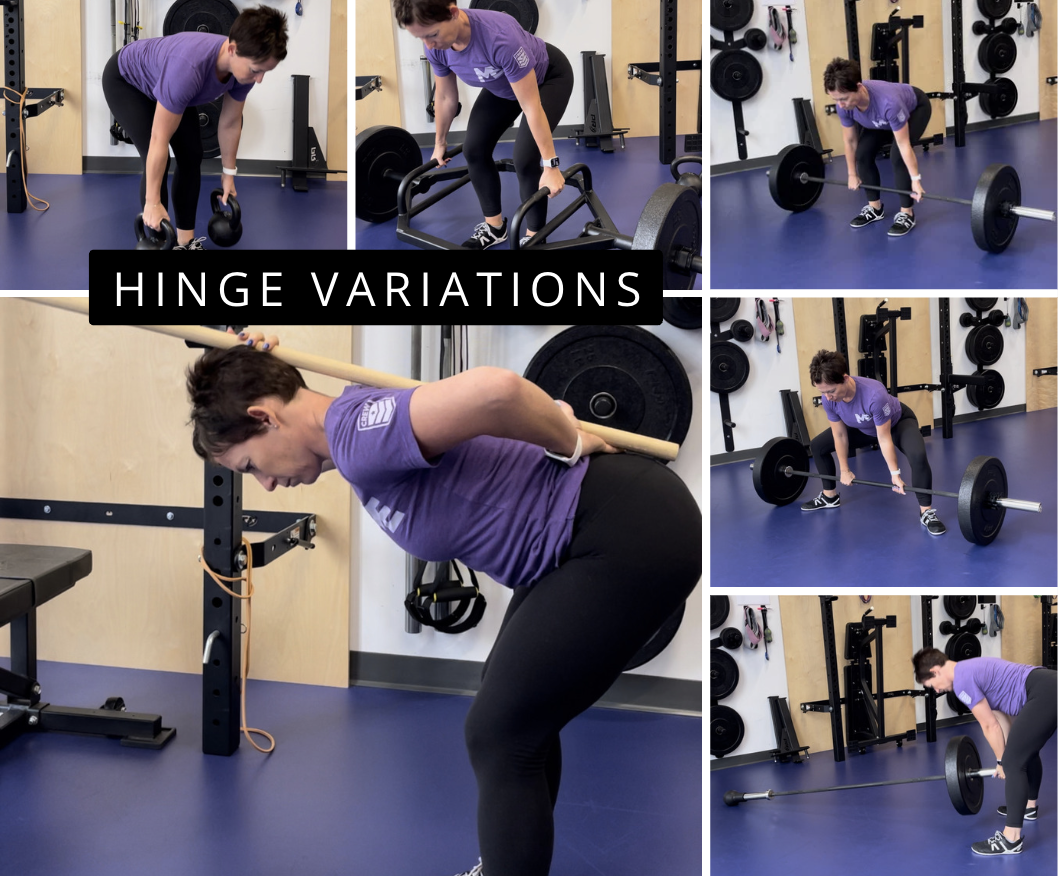A Physical Therapist's Guide to Safely Deadlifting After a Back Injury
We are diving into the topic of deadlifting after a back injury. Too many times we’ve heard clients say to us “my doctor said I can’t deadlift anymore.” While in some cases it may be warranted, we are here to challenge that old way of thinking.
“While it may seem counterintuitive to engage in such an intense exercise, deadlifting can actually be an effective way to rehabilitate and strengthen your back when done correctly” according to Dr. Bailey, licensed Physical Therapist.
Before we dive into the details, let's emphasize why deadlifting is a valuable exercise for your overall fitness journey. Deadlifting primarily targets the posterior chain muscles, including the glutes, hamstrings, and lower back. By engaging these muscles, deadlifting can help improve strength, stability, and posture.
Furthermore, deadlifting mimics a natural movement pattern that we perform daily in our lives: the hinge. From bending down to pick up an object to lifting a heavy suitcase, our bodies hinge regularly. Therefore, it is crucial to train this movement through deadlifting in order to build strength, minimize risk, and maximize functionality.
Start Slow and Rehabilitate Smartly
“If you've experienced a back injury, it's essential to take a cautious and gradual approach to reintroducing deadlifts into your routine”, says our Physical Therapist, Dr. Bailey. Remember, always consult with a qualified fitness professional or physical therapist before attempting any exercise post-injury. Here are some key points to consider:
Focus on Core Stability: Begin by strengthening your core muscles, which provide essential support for your lower back. Exercises such as planks, bird dogs, and glute bridges can help build a strong foundation.
Master Proper Form: Technique is paramount when it comes to deadlifting. Focus on maintaining a neutral spine, engaging the core, and keeping your weight distributed effectively. A fitness professional can guide you on proper form and ensure you're not risking further injury.
Gradually Increase Load: Start with lighter weights and gradually progress as your strength improves. Rushing into heavy lifting too soon increases the risk of re-injury and compromise technique. You want to build tolerance to load.
Incorporate Deadlift Variations - this is a biggie and you will see our personal trainers and fitness coaches training ALL variations with their clients.
Once you feel comfortable with the hinge pattern and have developed the necessary strength and stability, you can diversify your routine by incorporating different deadlift variations. Here are two popular options:
Sumo Deadlift: The sumo deadlift widens your stance, increasing activation of the inner thigh muscles. This variation may take some pressure off your lower back and be more suitable for those with back injuries.
Rack Pulls: Performed with the barbell raised on blocks or a power rack, the rack pull reduces the range of motion. This variation allows you to focus on strengthening the upper back and hamstrings while minimizing stress on the lower back.
1.5 stance: these are great for improving single-leg strength and stability. The variation may give a little relief to the low back and target the front leg hip and glute a bit more.
Remember, these variations are guidelines; if you’re still not feeling confident book a call with us. Our trainers and Physical Therapist can help keep you safe as you dive back in.
To deadlift or not to deadlift….that is the question!
When executed correctly, deadlifting can play a pivotal role in rehabilitating your back after an injury. With the guidance of a physical therapist and qualified fitness professional, you can rebuild strength, improve stability, and regain functionality.
By incorporating deadlifts into your training routine, you'll not only benefit from a stronger and healthier back, but you'll also enhance your overall performance and reduce the risk of future injuries. Take control of your fitness journey, and let deadlifting become a pivotal part of your path to success.
At Studio ME Fitness, we prioritize your safety and strive to help you achieve your fitness goals. Reach out to our team of experts for personalized guidance and tailored training programs that will empower you to overcome any injury and reach new heights of strength and functionality.

